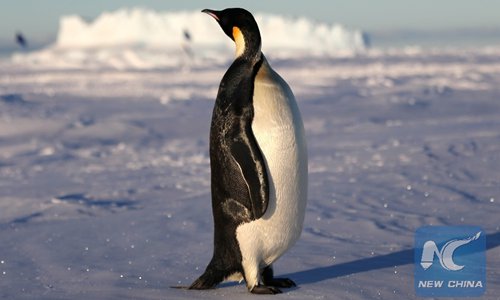Coronavirus might be re-released years into the future after long-term survival in freezing temperatures in the Antarctic: immunologist
By Guo Yuandan Source: Global Times Published: 2020/12/22 23:35:34

An emperor penguin is seen near China's research icebreaker Xuelong in Antarctica, Dec. 2, 2018. File Photo: Xinhua
After ravaging the world for almost a year, the coronavirus has finally made it to the Antarctic, which was considered “the world’s safest place.” A Chinese virologist warns that the continent’s freezing temperatures are suitable for the long-term survival of the coronavirus that could be re-released to the rest of the world years into the future.
The Chilean army announced that 36 people with the General Bernardo O'Higgins Riquelme base on the Antarctic have tested positive for coronavirus, media reported on Tuesday. Of the 36 infected, 26 are members of the Chilean military, while the others are maintenance workers, said media reports.
There are 150 scientific stations from 30 countries on the continent. Previous media reports called the remote Antarctic “the world’s safest place.”
A Chinese immunologist who requested anonymity told the Global Times on Tuesday that the fact that the virus has been found in the Antarctic is “high-impact,” as temperatures there are extremely low and suitable for the virus’ survival. It is also likely that the virus will be frozen under the ice and released years later and to attack humans.
It’s also possible that the virus will travel to other parts of the world on icebergs, said the immunologist.
Considering the new variation of the coronavirus in the UK can infect mice, which the immunologist said used to be immune to such infections, the coronavirus in the Antarctic is also likely to infect penguins, which should be given nucleic acid tests for further research.
Another source who is familiar with scientific work being conducted in the South Pole said that more scientists are conducting research in far south and if the virus jumps to scientists there, it will reset the bottom of coronavirus.
The immunologist believes Chile should do a thorough disinfection of the base, and take environmental samples to make sure the disinfection was effective. Ultraviolet light is also a sterilizing option, as is burning any item that might possibly be contaminated, said the immunologist.
The other anonymous source said disinfecting the base is possible, but it’s not likely possible to disinfect the outside.
Posted in: SOCIETY,CORONAVIRUS